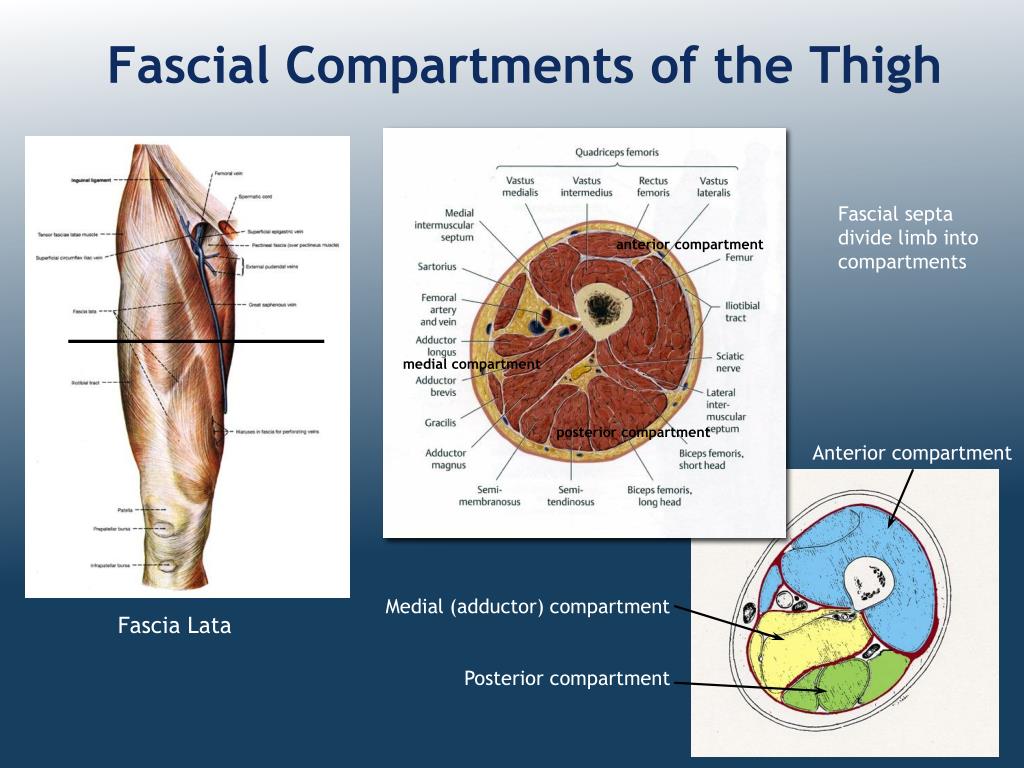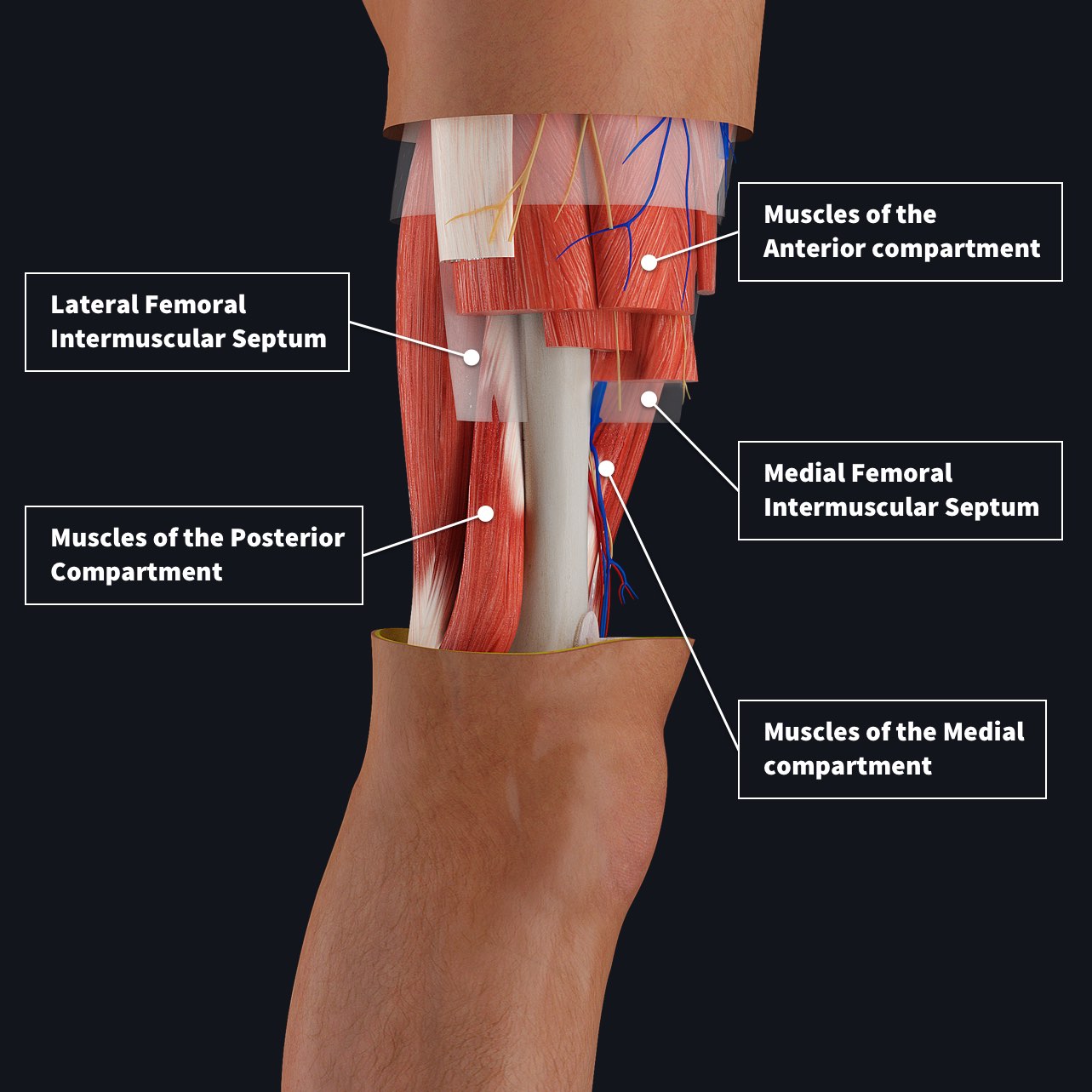


These muscles are rectus femoris, vastus medialis, vastus intermedius and vastus lateralis. Quadriceps femoris is a muscle group comprised of four individual muscles which make up the bulk of the anterior compartment of the thigh.
Fascial compartments of leg thigh skin#
Usually, the skin incision for chronic compartment syndrome is shorter than the incision for acute compartment syndrome. Similar to the surgery for acute compartment syndrome, the operation is designed to open the fascia so there is more room for the muscles to swell. If conservative measures fail, surgery may be an option. Changing from heel strike to toe running may modify symptoms depending on the compartments involved.Symptoms may be relieved by switching surfaces. Some athletes have symptoms that are worse on certain surfaces (concrete vs.Cross-training with low-impact activities may be an option.Your symptoms may subside if you avoid the activity that caused the condition.
Fascial compartments of leg thigh full#
Physical therapy, orthotics (inserts for shoes), and anti-inflammatory medicines may be of limited benefit in relieving symptoms and generally do not allow return to full activity. Chronic (Exertional) Compartment Syndrome The incision is repaired later when swelling subsides. Sometimes, the swelling is severe enough that the skin incision cannot be closed immediately. Your doctor will make an incision and cut open the skin and fascia covering the affected compartment. There is no effective nonsurgical treatment. SymptomsĪcute compartment syndrome is a surgical emergency.

This is usually relieved by discontinuing the exercise, and is usually not dangerous. People who participate in activities with repetitive motions, such as running or marching, are more likely to develop chronic compartment syndrome. The pain and swelling of chronic compartment syndrome is caused by exercise. If you have a cast, contact your doctor immediately.Ĭhronic (Exertional) Compartment Syndrome If symptoms of compartment syndrome develop, remove or loosen any constricting bandages. Casts and tight bandages may lead to compartment syndrome. Taking steroids is a possible factor in compartment syndrome. This can happen after severe intoxication with alcohol or other drugs. The development of compartment syndrome in this manner usually occurs in people whose brain function is impaired.

Most healthy people will naturally move when blood flow to a limb is blocked during sleep. Lying for too long in a position that blocks a blood vessel, then moving or waking up can cause this condition. A blood vessel can also be blocked during sleep. This may occur after a surgeon repairs a damaged blood vessel that has been blocked for several hours.


 0 kommentar(er)
0 kommentar(er)
